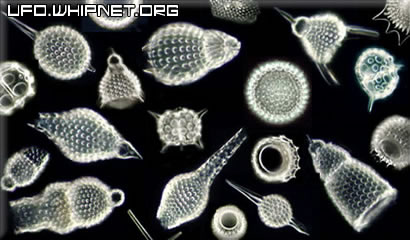Non-Carbon Based Life Forms Why We May Overlook Extraterrestrial Life

Jun.13.2007
Carbon is great molecular glue—there’s not doubt about it. Just add water and you’ve got life. Well, maybe it’s not quite that simple, but carbon and water do seem to be a winning combo, at least on planet Earth. That may be why we’ve been limiting ourselves in our search for extraterrestrial life. The carbon/water combo has worked so well for our own conditions, that we simply can’t imagine anything else supporting life.
Currently, our search for extra-terrestrial life forms has been focused on planets similar to ours. The perplexing idea exists, however, that what would be death to us on Earth, may be life to other beings. What we’re looking for may not lie in our version of the “sweet spot”.
It is definitely worth considering that other options do exist besides water and carbon. Alternative biochemists speculate that there are several atoms and solvents that could potentially spawn life. It is also worth considering that because humans are carbon-based beings, who do their lab work under conditions on planet Earth, we may be a bit biased towards carbon thinking.
 Not everyone is a “carbon chauvinist”, however. So far, scientists have already hypothesized several interesting alternatives to carbon. Various elements become more stable and capable of forming complex molecules when under strange (from a human perspective) thermal and atmospheric conditions. For example, silicone-based chemicals would be more stable than equivalent hydrocarbons in a sulphuric-acid-rich setting, which has been noted in some extraterrestrial environments. Not everyone is a “carbon chauvinist”, however. So far, scientists have already hypothesized several interesting alternatives to carbon. Various elements become more stable and capable of forming complex molecules when under strange (from a human perspective) thermal and atmospheric conditions. For example, silicone-based chemicals would be more stable than equivalent hydrocarbons in a sulphuric-acid-rich setting, which has been noted in some extraterrestrial environments.
Even counter-intuitive elements such as arsenic may be capable of supporting life under the right conditions. Even on Earth some marine algae incorporate arsenic into complex organic molecules such as arsenosugars and arsenobetaines. Several other small life forms use arsenic to generate energy and facilitate growth. Chlorine and sulfur are also possible elemental replacements for carbon. Sulfur is capably of forming long-chain molecules like carbon. Some terrestrial bacteria have already been discovered to survive on sulfur rather than oxygen, by reducing sulfur to hydrogen sulfide.
Nitrogen and phosphorus could also potentially form biochemical molecules. Phosphorus is similar to carbon in that it can form long chain molecules on its own, which would conceivably allow for formation of complex macromolecules. When combined with nitrogen, it can create quite a wide range of molecules, including rings.
So what about water? Isn’t at least water essential to life? Not necessarily. Ammonia, for example, has many of the same properties as water. An ammonia or ammonia-water mixture stays liquid at much colder temperatures than plain water. Such biochemistries may exist outside the conventional water-based "habitability zone". One exciting example of such a location would be Saturn's largest moon Titan.
Hydrogen fluoride methanol, hydrogen sulfide, hydrogen chloride, and formamide have all been suggested as suitable solvents that could theoretically support alternative biochemistry. All of these “water replacements” have pros and cons when considered in our terrestrial environment. What needs to be considered is that with a radically different environment, comes radically different reactions. Water and carbon might be the very last things capable of supporting life in some extreme planetary conditions. In any case, it is not beyond the realm of feasibility that our first encounter with extraterrestrial life will not be a solely carbon-based occasion.
Posted: www.dailygalaxy.com
Related: Intraterrestrials
|

